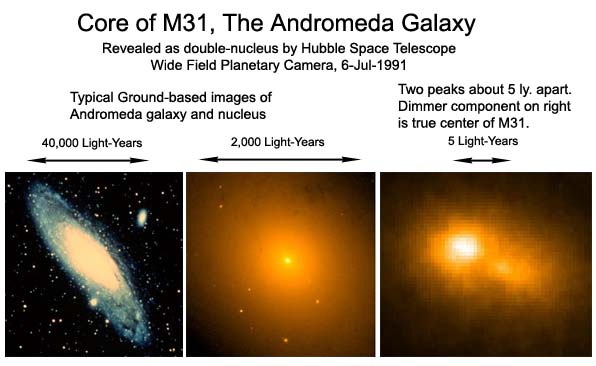Ten
years ago the Hubble Space Telescope revealed that
the core of the Andromeda Galaxy is actually a
double nucleus.
On
the left is a typical ground image of M31, one of
our closest galactic neighbors and visible to the
naked eye as a spindle-shaped "cloud" the width of
the full moon. The well-known "Bulge" at its center
is apparent.
Above
right shows the detail of this bulge, as known
before Hubble; a smooth system of old stars. The
individual points of light are some of Andromeda's
600 globular clusters, each containing several
hundred thousand stars. The background is dark
because the contrast was adjusted to bring out
detail in the core, which is much brighter than the
bulge.
Below
right is Hubble's green-light, high resolution
image taken on July 6, 1991. It shows two peaks
about 5 ly. apart, each containing a few million
densely packed stars. The brighter one to the left
is the "classic" or traditional nucleus as studied
from the ground; Hubble reveals that the dimmer
component on the right is the true "center" of
M31.
Credits:
T. R. Lauer (NOAO), NASA |

